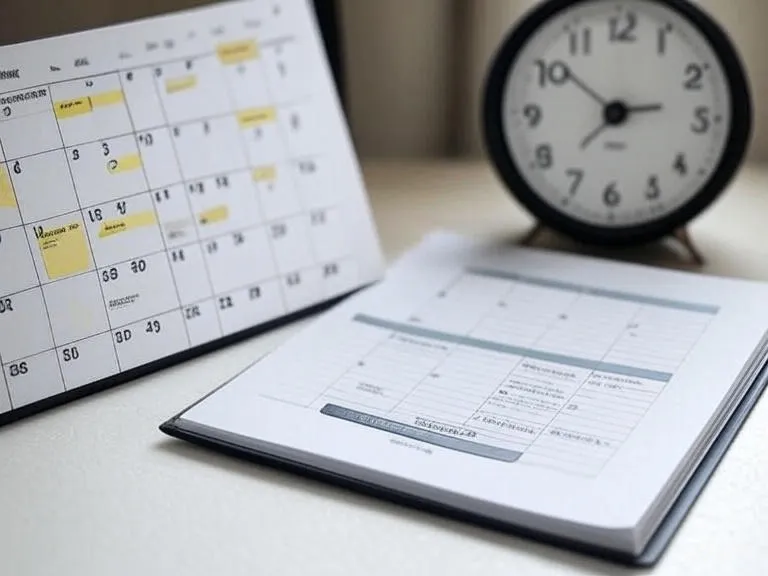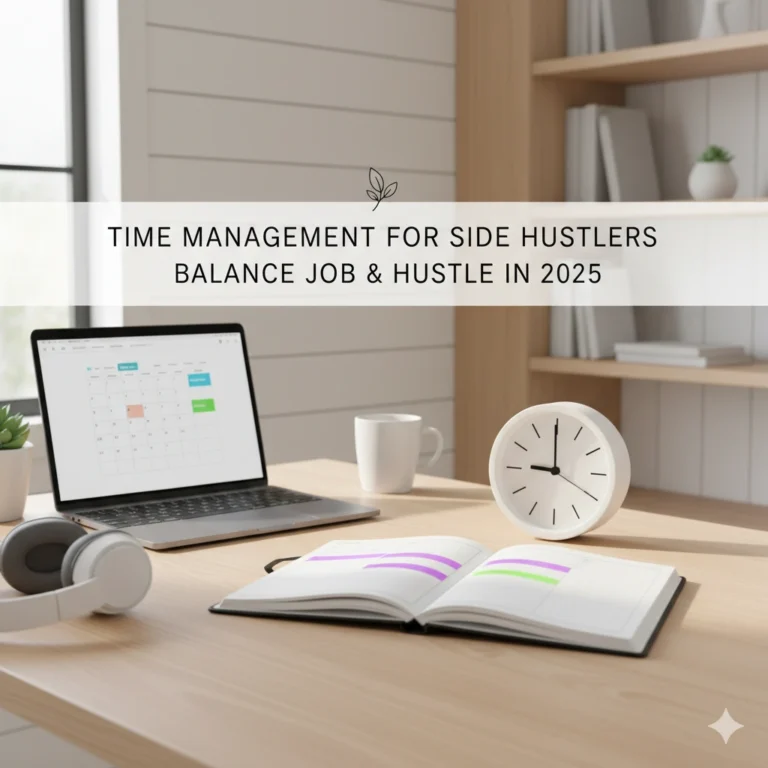How to Stop Procrastinating: Practical Strategies That Work
Introduction
Last month, I promised myself I’d finally organize my home office. I bought storage bins, made a to-do list, even watched a couple of YouTube tutorials. And then… the bins sat untouched in the corner for three weeks. Every evening, I’d think, “I’ll get to it tomorrow.” Sound familiar?
We all procrastinate. But the truth is, procrastination isn’t just about laziness. It’s about fear, perfectionism, lack of motivation, or even being overwhelmed. The good news? You can learn how to stop procrastinating once you understand the patterns behind it. In this article, we’ll explore common procrastination causes and solutions, share real-life stories, and give you practical productivity tips you can start using today.
Why We Procrastinate: Procrastination Causes and Solutions
Key Takeaways:
- Procrastination is not laziness—it’s avoidance of discomfort.
- Triggers include fear of failure, perfectionism, and instant gratification.
- Naming the cause helps you find the right solution.
Think about the last time you avoided an important task. Did you tell yourself you “weren’t in the mood”? Science suggests procrastination is less about mood and more about avoiding discomfort.

- Fear of failure: A friend of mine, starting a side hustle, delayed launching her Etsy store for months. She had all the designs ready, but she kept tweaking tiny details because deep down, she was afraid no one would buy.
- Perfectionism: I once postponed sending a blog post because I felt it wasn’t “perfect.” Ironically, that delay meant I missed a chance to ride a trending topic.
- Instant gratification: Our brains crave quick rewards. Watching one episode on Netflix now feels better than the long-term payoff of finishing a report.
Understanding these procrastination causes and solutions helps you realize you’re not broken—you’re human. Once you identify the “why,” you can choose the right fix.
Recognizing Your Triggers Before You Try to Overcome Procrastination
Here’s a story: my client, a freelance writer, always struggled to finish assignments. After keeping a small procrastination diary for a week, she realized her delay pattern: she procrastinated most when she checked email first thing in the morning. By moving email checks to noon, she gained hours of focus.
You can do the same. Notice the time, place, and emotions around your procrastination. Are you tired at night? Distracted by your phone? Intimidated by creative tasks? Recognizing your triggers is the first step to overcoming procrastination.
Practical Strategies: How to Stop Procrastinating in Daily Life
Break It Down into Smaller Steps
One of my readers wanted to start a YouTube channel but froze every time she thought about the whole process—scripts, filming, editing, uploading. I suggested she break it down: Day 1, outline script; Day 2, film intro; Day 3, edit just five minutes. A month later, she had three videos uploaded. That’s the power of small steps.
Use the 2-Minute Rule
The 2-minute rule says: if it takes less than two minutes, do it now. But more importantly, use it as a launchpad. For instance, “just open the Google Doc” feels easy. Yet once you open it, chances are you’ll write more than a single line. That’s how tiny actions snowball into progress.
Time Blocking and Batching
Many people beat procrastination at work by using calendars strategically. Instead of keeping tasks vague, schedule them: “Work on presentation, 2–4 PM.” Pair this with batching: answer all messages at once instead of every 10 minutes. You’ll cut distractions and finish earlier.

Quick Start Checklist:
- Break the task into the smallest step.
- Start with a 2-minute action.
- Time-block one session today.
- Batch repetitive tasks.
- Share your goal with someone.
Accountability and Public Commitment
I once joined a small mastermind group where we checked in weekly. Simply telling others “I’ll finish this draft by Friday” kept me on track. Accountability raises the stakes—when others expect progress, you’ll be less tempted to stall.
Rewards and Gamification
Make productivity fun. A college student I coached used the Forest app: if she stayed focused, her digital tree grew; if not, it died. It sounds silly, but that playful reward system helped her finish essays on time. Pairing tasks with rewards turns discipline into motivation.

Lifestyle and Mindset Shifts: Long-Term Productivity Tips
Key Takeaways:
- Productivity is fueled by energy, not just time.
- Progress matters more than perfection.
- Small habits compound into long-term results.
- Sleep: A well-rested brain resists temptation better.
- Exercise: A short walk can break a cycle of avoidance.
- Nutrition: Ever notice how hard it is to focus after fast food? Stable energy supports focus.
- Mindset: Shift from perfection to progress. Instead of “I must write the perfect article,” say “I’ll write a draft.”

These simple lifestyle adjustments support every other technique and keep you consistent.
(See also: The Morning Routine That Sets You Up for a Productive Day)
Beat Procrastination at Work: Real-World Applications
Workplace procrastination is its own beast. Maybe you delay calling a client, avoid spreadsheets, or put off tough conversations. Here are a few tailored strategies:
- Eat the frog: Do the hardest task first. If you finish that, everything else feels lighter.
- Block distractions: Use apps like Freedom to shut out social media during work hours.
- Micro-deadlines: Instead of “Finish report by Friday,” try “Complete research by 11 AM.”
- Short meetings: Long meetings drain energy. Keep them focused, with clear outcomes.
These simple shifts help you beat procrastination at work and build momentum.
(More ideas: Digital Tools Every Side Hustler Should Use | Related: Digital Minimalism: How Owning Less Online Saves You More)
FAQs About Procrastination
1. Is procrastination just laziness?
Not at all. Procrastination is usually about fear, discomfort, or energy levels—not a lack of character.
2. What is the 2-minute rule?
It’s a simple method: if it takes less than two minutes, do it immediately. It also works as a way to start bigger tasks without resistance.
3. How long does it take to build an anti-procrastination habit?
Research suggests new habits take 21–66 days to stick. The key is consistency, not perfection.

Conclusion: Overcoming Procrastination Starts Now
Procrastination isn’t a personal flaw—it’s a habit. And like any habit, it can be changed. By spotting the causes of procrastination, recognizing your triggers, and applying practical strategies like the 2-minute rule or accountability, you can regain control.
But here’s the truth: you don’t need to wait for the “perfect” day to begin. The best way to learn how to stop procrastinating is to take one action now. Open that document, send that email, or set one time block on your calendar.
👉 Your Next Step: Pick one technique from this article—just one—and try it within the next hour. Then come back tomorrow and build on that momentum. Small wins compound into lasting change.





